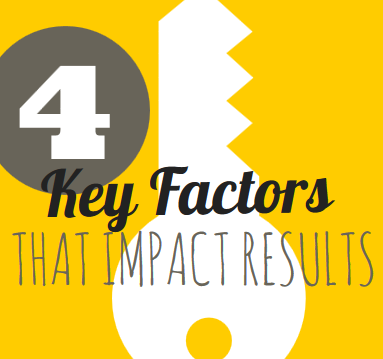
It’s one of the most-asked questions about inbound marketing: How long will it take to see results? While the actual answer will vary from client to client, it’s certainly not arbitrary. In fact, there are four key factors at play that will help to determine how long it will take for your business to see the kind of notable results you’re looking for from your investment in inbound marketing.

Your Commitment Level
Too often, businesses expect inbound marketing to be a “hands-off” service, hoping they can simply throw a bit of money at the problem and reap the rewards. To generate results, your effort will need to be sustained over time, and your business will need to take an active role in creating, curating and promoting the content developed to help generate leads and traffic.
Especially in the outset of your campaign, you’ll be called upon to fill out questionnaires and share your business insights with your agency or team. The longer you put these tasks off or the less you’re willing to take an active role, the longer it will take for those trying to build up your presence.
Inbound marketing is not a one-and-done solution; the more you’re willing to support the effort, the better your outcome.

The Current State of Your Marketing
Are you an industry leader – or a brand new player? Do you already have a rabid following, or are you relatively unknown to the denizens of the internet? Building up a fan-base of customers who want to consume your content is a process that, by nature, takes time.
Buying followers or “faking” engagement will only waste your dollars. For inbound to work like it should, the growth must be natural. Organic traffic and lead growth comes with consistent, quality content – so if you’re starting from ground zero or if your branding is currently all over the map, expect to wait a bit longer for things to fall into place.
This is especially true for content promotion. There are paid distribution solutions that can help to speed up the process and bring you in front of a larger audience, but earning trust and gaining attention won’t happen overnight. Earned media (publicity and sharing gained naturally) tends to convert the most strongly and yield the best results, but it’s also the hardest to build up.

Your Budget Level
Wait – didn’t we just say you can’t “buy” success? Absolutely. But smaller budgets mean less agility to publish and promote, meaning your agency will need to prioritize their efforts very carefully, often at the exclusion of tasks that would yield results; for example, publishing a monthly newsletter might be postponed until your landing pages have been improved. The more budget you have to play with, the more time can be invested and divided among many different efforts at once, all of which can help to yield results and cut down on the wait time.

Your Competition
How much noise do you have to cut through? If your competitors already have a strong grip on the industry or are publishing regularly, you’ll have to find ways to penetrate a market that is already being inundated with messaging. The more astute the competition, the harder you will have to work – and the longer it may take to see results.
That said, strong competition is no reason not to invest in inbound marketing. There is always room for another competitor to step up and improve upon what’s already being done.
Perseverance & Small Victories
OK, so you’re unlikely to see a sudden tidal wave of traffic and leads within your first few weeks – and maybe months – of inbound marketing, but that doesn’t mean you won’t see any results at all. Important to the process is celebrating your natural progress and small victories, as well as having the perseverance to stick with it, even when it seems like things are moving at a snail’s pace.
There’s a “critical mass” – a point where things just click, and the results start coming in bunches. But until you reach that point, patience, persistence and careful analysis are all important.
Remember – inbound marketing is a marathon, not a sprint!